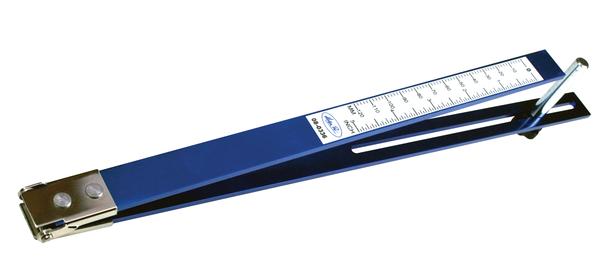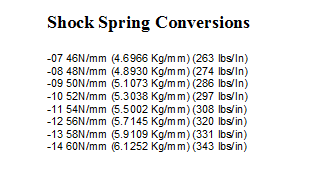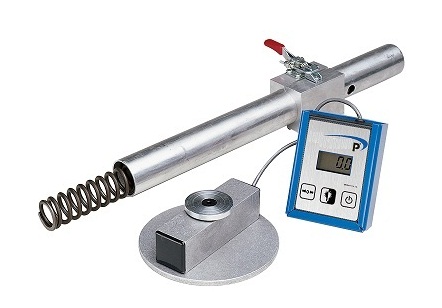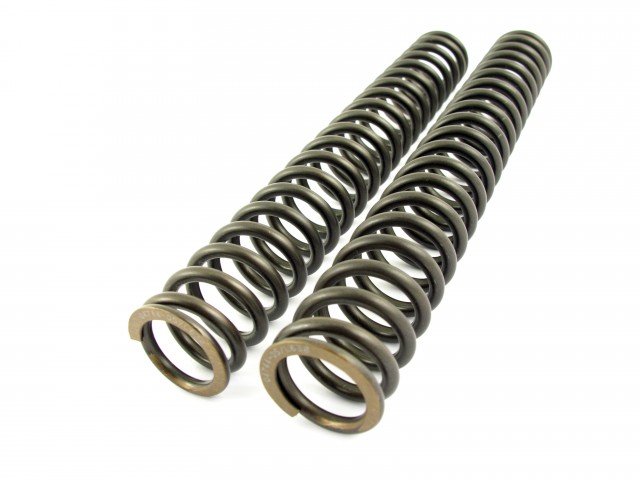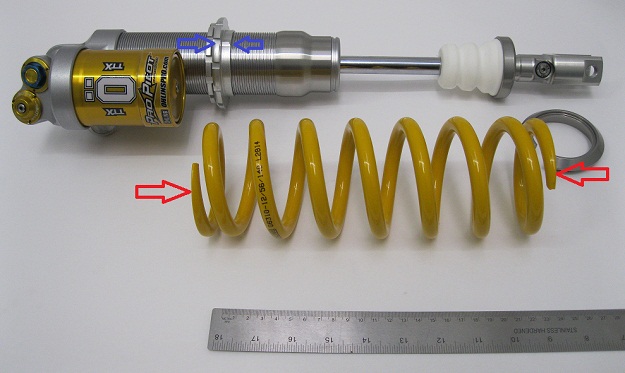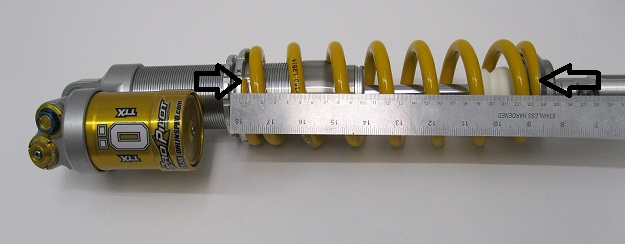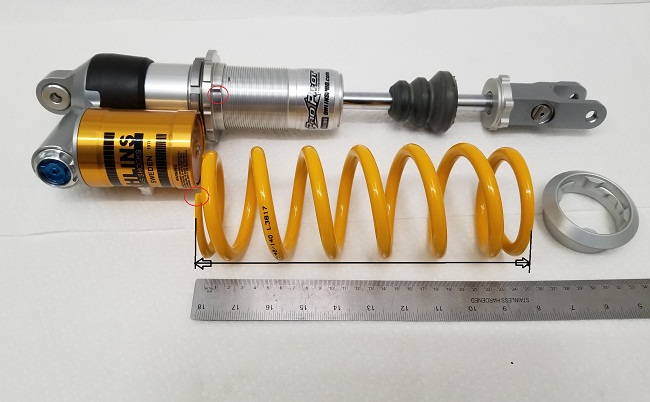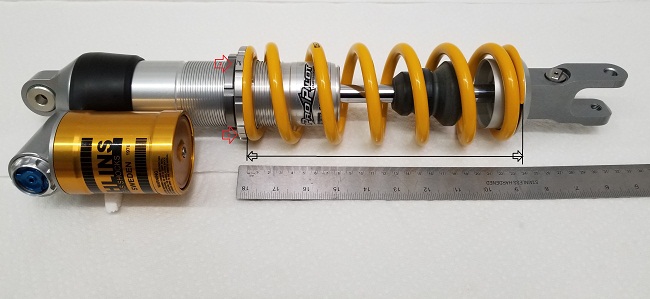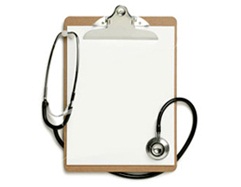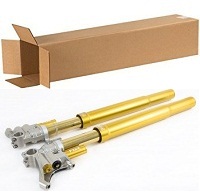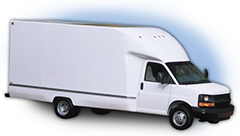5) Shock Springs, Fork Springs, Pressure Springs
For your Weight and Conditions there are many Springs for many things.Most brand new shocks will have the best spring choice determined and preload given your information you provide.
There is years of great current spring data with many others that weigh the same as you and or have loading or conditions the same as you, so it’s very easy on new shocks or forks when ordered to be very close from the start.
On some new year models or preowned suspension that you may have you may need to determine more below, and many personal preferences can still apply.
The easiest way to check your sag is with a “Sag” tool .
Keep in mind that “Spring Preload” is as or more important than JUST Rider SAG.
Metric whole numbers is the way of the suspension world !
Use “inches” if your bike is made out of Wood (insert humor here) .
Our TECH page may help you with converting rates N/m to kg/mm or to lbs., they are not the same thing,
Even today we see people searching for springs and have not realized on many brands the listed rate appears in N/m not Kg/mm so to avoid buying the same thing twice or wrong direction maybe you should know.
Also many standard OEM springs actually rate less that what manufacturer may claim or only peak value of close to that rate, not a consistent true value all the way through like a high quality spring so it is popular to go with a better quality spring.
When in doubt have your springs professionally rated on a digital machine for best results.
Simply put, to have the correct balance you need to have the:
A) correct spring rate*
B) correct range of preload on that spring choice*
C) to get you the correct rider sag* and bike only sag with no rider.
or a spring “RATE” change may be helpful.
Many things feel weird if your off on this, the rear effects the front and front can effect the rear, the travel may feel lifeless or too stout, the turn in or balance may be to lazy or too steep.
Once within manufacturers range, tuner’s often add or take away a little as ONLY a Half Turn or a Quarter Turn at a time, more or less ,slight turns to further benefit their use.
A)
You can exactly measure the free length of the spring usually in (mm) while off shock.
B)
Installed on shock which is slightly compressed example maybe 10mm to 16mm of “Preload” depending on what its going on.
C)
Then once all back together field check with some pretty exact measurements of “rider sag” meaning fully suited up with about 2/3 to 1/2 fuel load which in general terms rider sag is settle from fully extended total travel there is to get started, while staying in the “preload range” listed in step “B” above, and after that is set, the “bike only” or “static” sag should be about 5% -10% of that total travel claimed, or buy some springs!.
They are only as accurate as your measuring skills, body placement and free play in shock mount bearings.
All of those above things are then considered,
Visit Our TECH-TOOLs-PICs page for more info on Accurate Spring Rating and Testing and How to determine Preload.
2)
Its getting popular to also field check front rider sag also, it’s a lot harder to do than the rear but possible to do the front spring preload and spring rate calculation.
To be most accurate you would need to minimize seal and bushing stiction, fork angle, and other possible alignment issues.
There is a specific program for this but the basic idea is to also consider if an internal top out spring is used and what rate that top out spring is within the cartridge or strut and how it actually can effect the actual spring preload.
3)
Surprisingly we found even major suspension companies and publications not informing their customers about the difference between N/mm and Kg/mm. They are Not the same thing! so when talking about fork springs rates it’s best to clarify that.
Many modern forks with a .52N/m may feel plusher than a fork with a .48kg,(don’t be too stuck on just because you used a .43kg in the mid 1990’s your current machine needs that number)
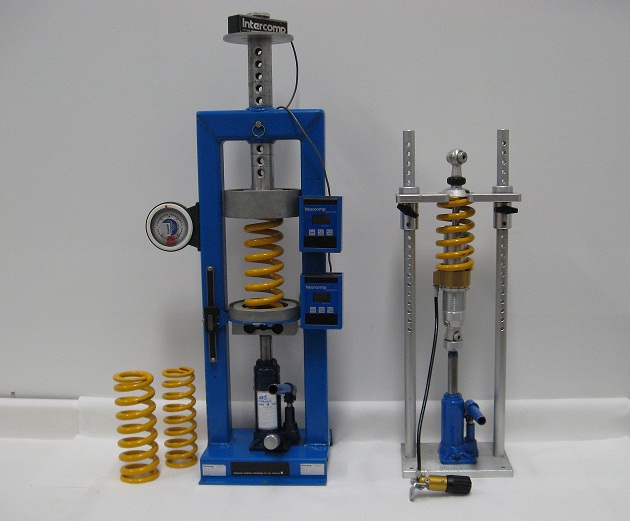
4)
Preload on the spring way of Testing and Tuning is far more accurate then trying to roll around field checking rider sag, most often done incorrectly and with worn shock and linkage joints making the measurement not as useful.
5)
Shown above blue arrow is New style Ohlins TTX shock spanner with “notch” for spring end.
Many people measure the spring FREE length OFF the shock, edge to edge and record measurement , this example is 248mm.
9)
Shown Above spring installed on shock it is compressed to 235mm, So that’s called PRELOAD which is about 12mm to start (Baseline setting), a good range may be 11-15mm for this application.
RECORDING EACH 1/2 turn Installed Length, then do the same thing 1/2 TURN at a time OFF from baseline setting for a few turns.
THIS way you have a basic idea if you adjust your spring more or less you will know exactly what preload you have between a range or 10-15mm, and a different spring may work best if out side this range.
Preload on the spring way of Testing and Tuning is far more accurate then trying to roll around field checking rider sag, most often done incorrectly and with worn shock and linkage joints making the measurement not as useful.
7)
8)



